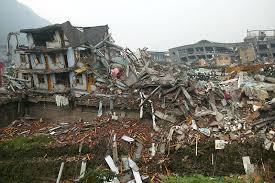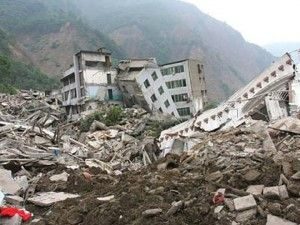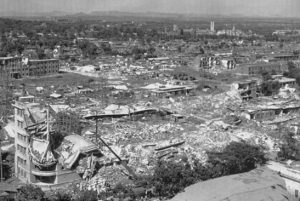 The majority of earthquakes are minor and cause little damage, They are quite common, and for the most part, we never hear about them. On the other hand, on January 23, 1556 an earthquake hit Shaanxi, China. While this didn’t even come close to being the largest earthquake ever recorded, it remains the deadliest to this day. Scientific investigation revealed that the magnitude of the quake was approximately 8.0 to 8.3. The largest earthquake in history was the 1960 Valdivia earthquake, registering 9.4 to 9.6. The Valdivia was without doubt much larger that the Shaanxi China quake, but the size of a quake isn’t the only thing that makes it the worst.
The majority of earthquakes are minor and cause little damage, They are quite common, and for the most part, we never hear about them. On the other hand, on January 23, 1556 an earthquake hit Shaanxi, China. While this didn’t even come close to being the largest earthquake ever recorded, it remains the deadliest to this day. Scientific investigation revealed that the magnitude of the quake was approximately 8.0 to 8.3. The largest earthquake in history was the 1960 Valdivia earthquake, registering 9.4 to 9.6. The Valdivia was without doubt much larger that the Shaanxi China quake, but the size of a quake isn’t the only thing that makes it the worst.
The epicenter of the Shaanxi quake was in the Wei River Valley in the Shaanxi Province, near the cities of Huaxian, Weinan and Huayin. In Huaxian, every single building and home collapsed, killing more than half the residents of the city, a number estimated in the tens of thousands. It was a similar  story in Weinan and Huayin. In some places, 60-foot-deep crevices opened in the earth. Serious destruction and death occurred as much as 300 miles away from the epicenter. The earthquake also triggered landslides, which contributed to the massive death toll. In all, an estimated 830,000 people lost their lives in the Shaanxi earthquake. Counting casualties is often imprecise after large-scale disasters, especially prior to the 20th century, but this disaster is still considered the deadliest of all time.
story in Weinan and Huayin. In some places, 60-foot-deep crevices opened in the earth. Serious destruction and death occurred as much as 300 miles away from the epicenter. The earthquake also triggered landslides, which contributed to the massive death toll. In all, an estimated 830,000 people lost their lives in the Shaanxi earthquake. Counting casualties is often imprecise after large-scale disasters, especially prior to the 20th century, but this disaster is still considered the deadliest of all time.
The quake struck in late evening, with aftershocks continuing through the following morning. A magnitude 8.0 to 8.3 earthquake isn’t close to the strongest tremor on record. However, the quake struck in the middle of a densely populated area with poorly constructed buildings and homes, resulting in the horrific death toll. Even if the number of deaths caused by the Shaanxi earthquake has been overestimated slightly, it would still rank as the worst disaster in history by a considerable margin. The earthquake and tsunami in Indonesia in 2004 is  generally considered the second deadliest disaster in history.
generally considered the second deadliest disaster in history.
The local records indicate that, in addition to inspiring searches for the causes of earthquakes, this particular quake led the people in the region affected to search for ways to minimize the damage caused by such disasters. Many of the casualties in the quake were people who had been crushed by falling buildings. Thus, in the aftermath of the 1556 quake, many of the stone buildings that had been leveled were replaced with buildings made of softer, more earthquake-resistant materials, such as bamboo and wood. By all accounts, this was an earthquake like no other.


Leave a Reply